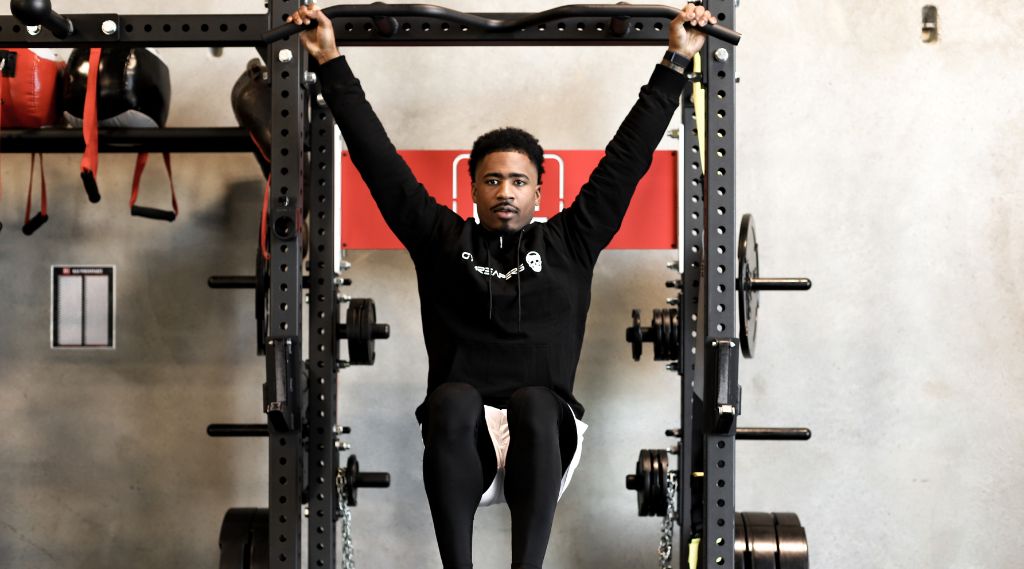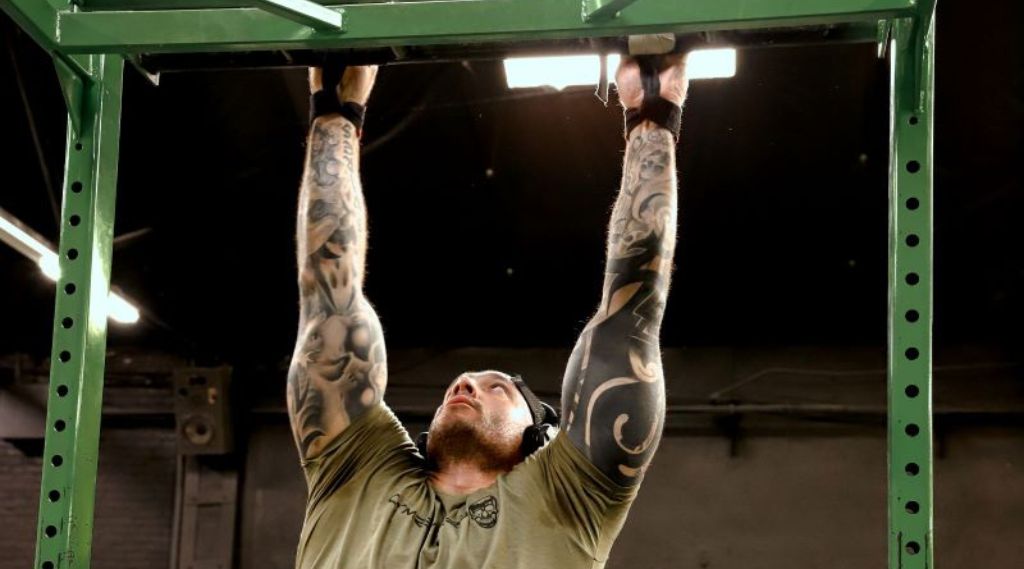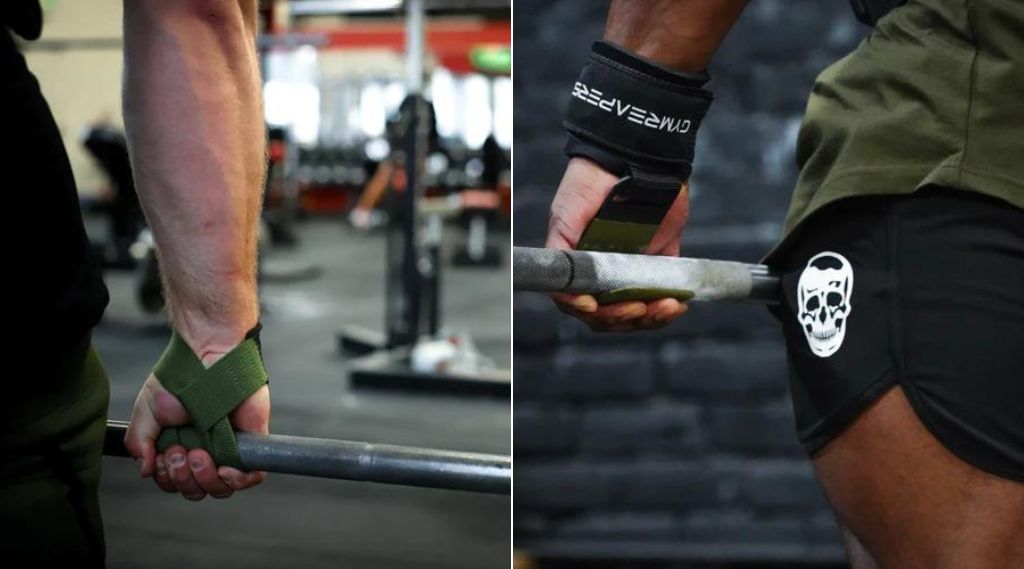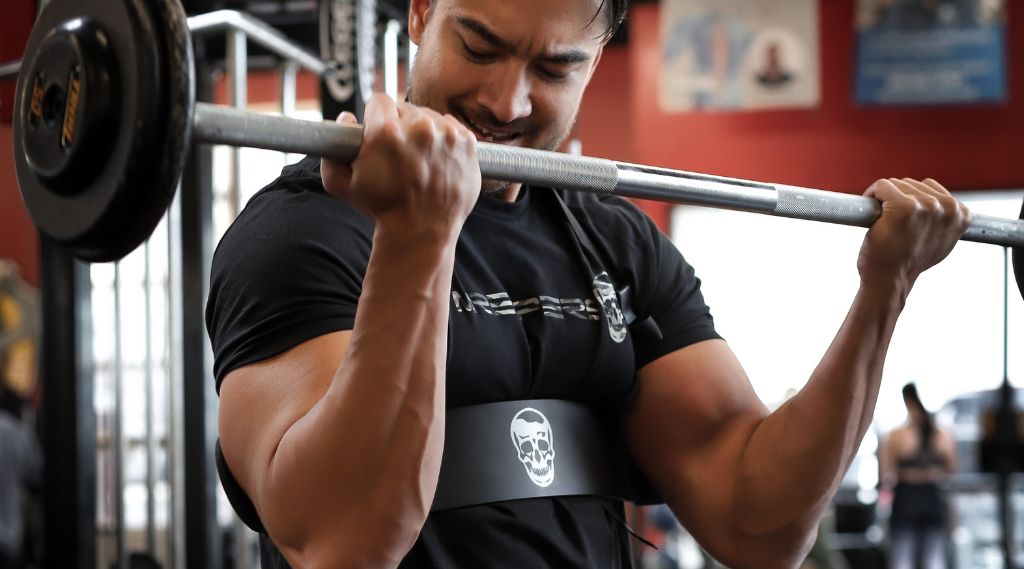Many lifters are severely limited in how many pull-ups they can do because of their grip strength rather than their back strength, so it may be worth using lifting straps.
Lifting straps are a perfect tool to help you get the most out of your pull-ups. They anchor you to the pullup bar to remove grip strength and endurance from the equation, allowing you to focus on building a great mind-muscle connection, increasing time under tension, and improving range of motion.
To help you get the most out of your pull-ups, I’ll explain exactly how to use lifting straps, who should (or shouldn’t) be using lifting straps and identify some considerations to make sure you have the proper straps for pull-ups.
Key Takeaways
How Do Lifting Straps Help With Pull-Ups?

Lifting straps help with pull-ups by supporting your grip and encouraging muscle hypertrophy, especially for those who feel limited by their grip strength/endurance rather than their back muscles.
Please note that lifting straps are different from wrist wraps. Wraps are solely designed to support your wrist and give the joint more stability. They will not aid your grip.
Most commonly, you will see people in the gym using lifting straps when they are trying to lift a very heavy free weight (barbell or dumbbell). This will typically be done for exercises like deadlifts or barbell rows.
While these exercises would benefit from lifting straps. I think that straps are severely under-utilized when it comes to bodyweight exercises that rely on grip strength, like pull-ups.
Grip
The primary purpose of lifting straps is to improve your grip on the thing you’re holding, which helps prevent it from sliding out of your hands and reduces the demands on your forearm muscles to hold on.
Since your primary goal when doing pull-ups is likely to increase the number of reps you can do over time, losing your grip on the bar can be the biggest obstacle to overcome.
You can lose your grip on the bar while doing pull-ups for a variety of reasons. These include:
- You have smaller hands
- Your back muscles are stronger than your grip
- You are sweating
- There is no knurling on the bar
- Cramping
Whatever the reason, failing pull-ups on grip is a fairly common (and very frustrating) occurrence that limits your results, and lifting straps are a great tool that can solve any of these issues.
Muscle Hypertrophy
A second, and very underrated way, in which straps can help with pull-ups is their added hypertrophy benefits.
Think about it this way: after you are done straining for your last few reps on a challenging set of pull-ups, what muscle group do you shake out first? Is it your lats and upper back (which is what you are trying to develop) or is it your hands and forearms?
If you are shaking out your hands and forearms after your pull-ups, that is a good indication that your hand and forearm muscles are working harder than your back and they are the limiting factor rather than your target muscles.
Using lifting straps is a great way to overcome this obstacle. Once you strap yourself into the pull-up bar, you no longer have to focus on the simple task of actually holding on. Instead, you can now improve your mind-muscle connection and actually focus on contracting the muscles that you are trying to grow.
Additionally, using lifting straps will allow you to add more volume to your training sessions by allowing you to perform more reps before you fatigue.
Once you remove the variable of your grip strength, which limits how much time you can spend on the bar, you will likely find that you can squeeze out a few more reps per set, since your big back muscles are now doing the majority of the work.
Increased Range Of Motion
Lifting straps help you target the proper muscles, get more reps with a better contraction, and provide a newfound ability to sit in the stretched position at the bottom of each rep.
Once you are no longer worried about cranking out your prescribed reps before your fingers slip off, you can emphasize that stretch and work in a fuller range of motion.
This will not only have greater hypertrophy benefits than partial reps, but it can also be a great way to promote shoulder health in the dead hang position.
How To Use Lifting Straps For Pull-Ups

Below, you will find a step-by-step guide for using lifting straps for pull-ups.
Please note that this guide, and your use of straps, will depend on your overall fitness goals. If you are training solely for aesthetics and back development, feel free to use straps on all of your sets.
However, if your training goals are oriented more towards athletic purposes, grip strength, or max-pullups, you should consider performing your pull-ups without straps for your first couple of sets and then transition to using straps as fatigue sets in.
Step 1: Choose The Right Lifting Strap
There are different kinds of lifting straps that you can use, but the top two types that I recommend are Figure 8 straps or Regular straps.
While Figure 8’s are great for exercises like deadlifts and rows, since they are more secure and fairly easy to put on, they aren’t my favorite for pull-ups.
The regular straps are easy to use and will ensure your grip is rock-solid, but much more importantly, they are easy to release the bar and will not put you at risk of being stuck on the bar and suspended by your hands.
Step 2: Grab A Bench Or Chair And Stand On It
When doing pull-ups without straps, you are more than fine to jump up to reach your pull-up bar. However, that same strategy won’t work very well if you plan on using straps.
Instead, you should grab an elevated surface to stand on (box, chair, bench, etc) to help you secure your hands to the bar. Place this object underneath, but slightly behind, the pull-up bar so that it's out of the way when you’re doing your set.
Next, stand on the elevated surface. Make sure that the bar is 1-2 feet in front of you when you stand on the object but ensure that you can easily reach the bar.
Step 3: Wrap The Straps On The Bar
Wrap your straps on the bar like you normally would for any type of deadlift or rowing movement.
To do this, you first want to slide one end of the long strap through the loop opening, as if you are making a circle.
Next, you want to open your hands with your palms up and slide your hands through that circular loop. The wrap should now be around your wrist.
To ensure that you have your wrap going the proper way, verify that the loose piece of fabric comes across your palm and travels in the direction from your pinky finger to your thumb.
For reference, here is a great video explaining how to put straps on:
Now that the strap is properly around your wrist, you want to place your hands as far apart as you would for normal pull-ups without straps, and then wrap the loose fabric around the bar until you feel secure.
Generally, this grip should be shoulder-width or wider, but it depends on how you normally do your pull-ups and what your goals are.
Step 4: Do Your Pull-Ups
Once your grip is secure, step forward off of your object and slowly lower yourself to a dead-hand position.
If you feel like your straps are attached to the bar correctly, start your set!
Step 5: Get Back On Your Elevated Surface And Unwind Your Straps
Once you’ve finished your pull-ups, carefully reach your feet out behind you for your elevated object.
Once you find it, stand on the box as you did at the start and unwind your wrist wraps to rest between sets.
Who Should Use Lifting Straps For Pull-Ups

Those who would benefit most from using straps for pull-ups are:
POWERLIFTERS
As a powerlifter myself, I believe that all powerlifters should use lifting straps for pull-ups.
Chances are that pull-ups are in your program as an accessory to encourage hypertrophy and shoulder health. As such, using lifting straps just makes sense to increase the quality of your reps and allow for higher volume.
Your grip strength will likely get enough stimulus from your deadlifts, so using straps for pull-ups shouldn’t be a problem in maintaining grip strength.
PEOPLE TRYING TO BUILD THEIR BACK
Anyone who is training for aesthetic purposes and wants their back to be as muscular as possible should be using lifting straps for their pull-ups.
They can help you focus on your form, recruit your targeted muscles, and spend more time under tension; which will lead to a bigger back over time.
If you are genuinely concerned about your back and bicep growth out-pacing your forearm development, you can mitigate this problem by performing your first set or two without straps, or by adding in forearm-specific training at the end of your workout.
BEGINNERS
A final group of people who should be using lifting straps for their pull-ups is beginners.
If you're just starting to do pull-ups, wrist straps can be a great tool to help build your strength and confidence. Wrist straps are easy to use and allow you to focus on the movement rather than worrying about your grip.
They also assist at the bottom of each rep so that you get used to engaging your back muscles throughout the entire exercise. This will help you stay on the bar longer and will build a lot of confidence and strength in the full range of motion.
If you’re working toward your first bodyweight pull-up, then you can use straps on the assisted pull-up machine or when doing banded pull-ups to take your grip out of the equation and progress toward a bodyweight pull-up.
Who Should NOT Use Lifting Straps For Pull-ups

Those who would not benefit as much from using lifting straps for pull-ups are:
ROCK CLIMBERS OR OTHER ATHLETES TRYING TO WORK ON GRIP
Athletes who rely heavily on grip strength and strong forearms in their sport, like rock climbers, should avoid using lifting straps when performing pull-ups to ensure they’re maximizing their grip training.
For these people, their main goals when performing pull-ups are more performance-based. As such, they are less focused on the aesthetic element of a pull-up, and instead, they need to be athletic and strong for a specific purpose.
If lifting straps directly contradicts your training goals, I do not recommend them.
PEOPLE WHO WANT BIGGER FOREARMS
People who want bigger forearms may not benefit from using lifting straps on their pull-ups because lifting straps reduce stress on the forearms which could slow their growth.
However, I would argue that this category of lifter may still want to implement straps periodically into their training.
If I were training with bigger forearms as a primary goal, I would likely perform my first few sets of pull-ups with my bare hands. Once fatigue begins to set in, I would transition to straps to “force” more reps out of my forearms and back.
In addition to this, I would program more isolation movements like reverse curls, wrist curls, hammer curls, or farmer's walks after my compound movements.
CROSSFIT ATHLETES
Finally, Crossfit athletes may not benefit from using lifting straps when training because pull-ups are a core movement in CrossFit and you cannot use straps when you’re competing.
It makes more sense to practice without straps so that you can do pull-ups without straps in competition.
2 Considerations When Choosing Lifting Straps For Pull-ups
When you’re choosing straps for pull-ups, there are two key aspects to consider:
Type
Two main types of lifting straps are Figure 8’s and Regular straps. While both are adequate choices, I recommend you use Regular straps if possible.
Figure 8’s are easier to put on; however, they are much harder to take off when you are suspended from a barbell.
To take off a Figure 8 strap, you essentially need to have an elevated surface to stand on so that you can take the pressure from your bodyweight off the bar. If something unforeseen happens where you cannot get back on the box you started on, you may be in a very uncomfortable and dangerous suspended position with these straps.
Regular straps make it much easier to dismount from the bar. You can simply release your grip on the end of the strap, and they will unwind from the bar. This will allow you to drop down even if you can’t make it back to your elevated surface.
Material
A good pair of lifting straps should be comfortable, absorb sweat during strenuous lifting sessions, and withstand constant wear and tear.
You can typically get lifting straps in either a nylon fabric, cotton material, or leather material.
Leather straps will typically be more expensive, but they are much more comfortable and last longer, in my experience.
Cotton and nylon lifting straps have better padding between your hands and the bar and between your wrist and the strap, but cotton straps are better for absorbing sweat, easier to wash, and may be more durable than nylon.
Best Lifting Straps For Pull-Ups

The Regular Gymreapers lifting straps are one of your best options for helping you progress your pull-ups.
These straps are made from durable cotton, which provides reliable padding between your hands and the bar. The material has an ideal texture so that, regardless of the type of bar you’re on, you will feel locked in during your pull-ups.
The fabric is also lined with neoprene where the strap meets your wrist, which prevents the material from digging into your skin. This is very helpful for pull-ups, as your entire body weight will be suspended by your hands and these straps. Without this extra padding, that can be a very uncomfortable experience.











Hinterlasse einen Kommentar
Alle Kommentare werden vor der Veröffentlichung geprüft.
Diese Website ist durch hCaptcha geschützt und es gelten die allgemeinen Geschäftsbedingungen und Datenschutzbestimmungen von hCaptcha.